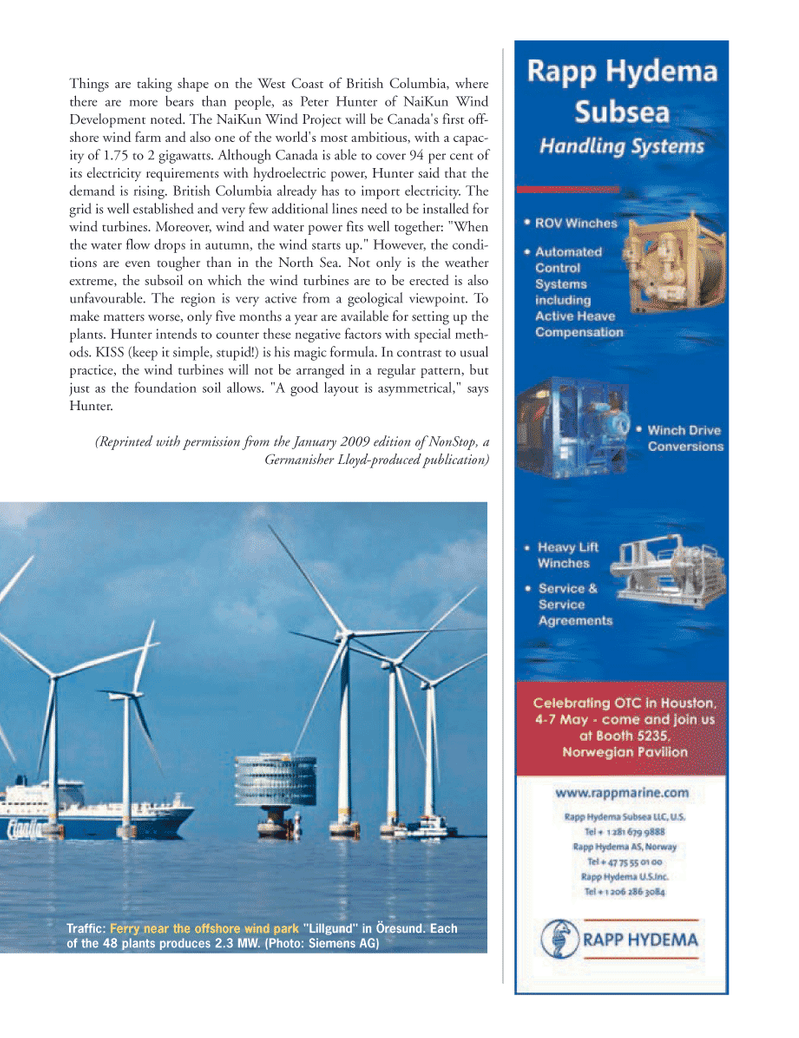
Page 25: of Marine Technology Magazine (April 2005)
Read this page in Pdf, Flash or Html5 edition of April 2005 Marine Technology Magazine
Things are taking shape on the West Coast of British Columbia, where there are more bears than people, as Peter Hunter of NaiKun Wind
Development noted. The NaiKun Wind Project will be Canada's first off- shore wind farm and also one of the world's most ambitious, with a capac- ity of 1.75 to 2 gigawatts. Although Canada is able to cover 94 per cent of its electricity requirements with hydroelectric power, Hunter said that the demand is rising. British Columbia already has to import electricity. The grid is well established and very few additional lines need to be installed for wind turbines. Moreover, wind and water power fits well together: "When the water flow drops in autumn, the wind starts up." However, the condi- tions are even tougher than in the North Sea. Not only is the weather extreme, the subsoil on which the wind turbines are to be erected is also unfavourable. The region is very active from a geological viewpoint. To make matters worse, only five months a year are available for setting up the plants. Hunter intends to counter these negative factors with special meth- ods. KISS (keep it simple, stupid!) is his magic formula. In contrast to usual practice, the wind turbines will not be arranged in a regular pattern, but just as the foundation soil allows. "A good layout is asymmetrical," says
Hunter. (Reprinted with permission from the January 2009 edition of NonStop, a
Germanisher Lloyd-produced publication)
Traffic: Ferry near the offshore wind park "Lillgund" in Öresund. Each of the 48 plants produces 2.3 MW. (Photo: Siemens AG)
MTR#3 (18-33).qxd 3/27/2009 4:14 PM Page 25

 24
24

 26
26
